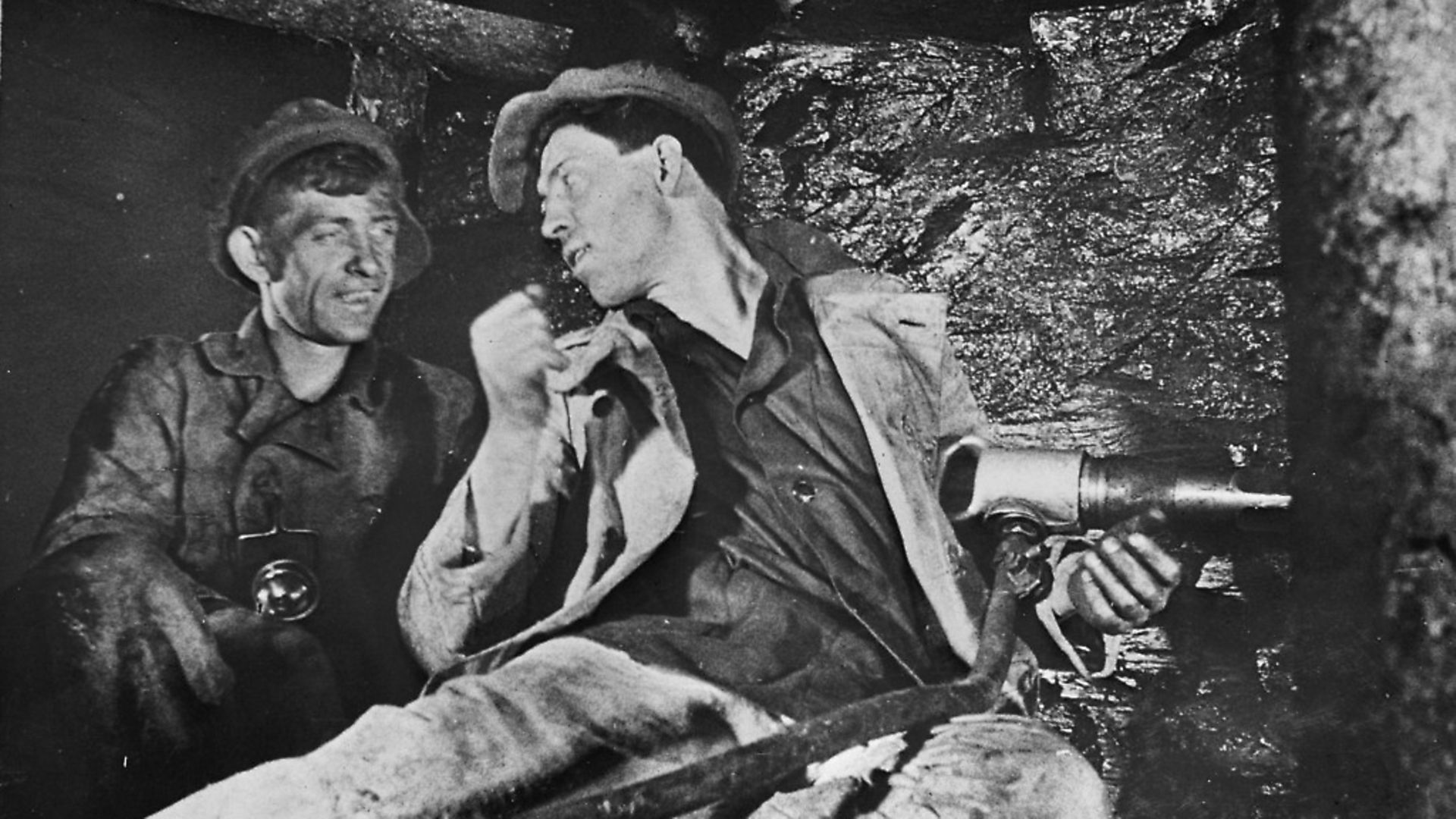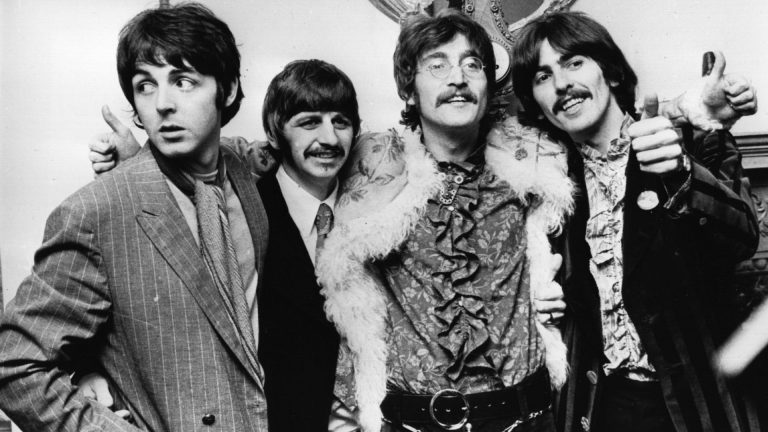
Charlie Connelly delves into the life of Alexey Stakhanov, Stalin’s superstar miner.
The evening of August 30, 1935, was a warm and muggy one in eastern Ukraine when Alexey Stakhanov left his small flat in Kadievka and headed for the night shift at the Tsentralnaya-Irmino mine. The mine had been working round the clock since Stalin’s introduction of rapid Soviet industrialisation in the early 1930s, setting ambitious targets and plans that the Tsentralnaya-Irmino had always struggled to fulfil. Kadievka was a long way from Moscow and its methods and equipment were not exactly at the forefront of modern technology and efficiency.
That was about to change.
As he walked through the mine gates in the summer twilight, duffel bag slung over his shoulder, a six-hour shift stretched out ahead of the burly 29-year-old. It was demanding work, lying on his back deep underground, wielding the heavy jackhammer and jamming it into the seam, chipping away at the coal before taking it to the carts pulled by pit ponies, wedging wooden struts into the new cavity and starting the process all over again. It was hot, dirty, claustrophobic work and the hours dragged interminably.
That night, however, he wasn’t dragging his feet towards the changing block as much as usual. There were palpable butterflies in his stomach and a hint of a spring in his step because when his shift started the mine would be trying something new, something that might improve productivity and maybe even working conditions. Best of all it had been his idea: If it worked, who knows, he might be given more responsibility and a pay rise. That wouldn’t be bad for a former shepherd who could neither read nor write. He might even be able to afford a horse, the reason he’d left his distant village for the mines in the first place.
As he stowed his bag in his locker and made his way towards the cage ready to descend to the depths, Stakhanov had no idea just how the events of that shift were about to change his life. Within days he would be so famous an entire workers’ movement would bear his name, the town of Kadievka itself would eventually be renamed in his honour and before the year was out his face would be gazing out from the cover of Time magazine.
Waiting for him at the cage were three fellow miners whom he knew well, the local Communist Party secretary and a journalist from the local newspaper. Handshakes were exchanged and the group descended to the tunnels.
Stakhanov’s idea was a simple division of labour. One miner would excavate the coal, he said, while another loaded the cart as a third propped up the roof as necessary. The fourth would lead the pit ponies away with the full carts. The jackhammer, on which he had recently been trained at his own request, would also help speed up production. Having convinced his supervisor the plan would work, that night would see it put into action for a full shift for the first time.
At the seam Stakhanov lay down and heaved the jackhammer into place. The party boss, uncomfortable in the heat and dark, mopped his brow with a handkerchief, the journalist opened his notebook, the four miners nodded to each other and Stakhanov fired up the drill, ear-splitting in the confined space.
The individual quota of coal expected from each miner during a six-hour shift was seven tonnes. As the coal began to pile up behind Stakhanov it was clear that he had surpassed that well inside the first hour. By the time he switched off his machine for the last time six hours later he had hewn an incredible 102 tonnes of coal, 14 times the quota.
The journalist scurried back to the office and two days later the news of the Kadievka miner’s achievement reached the front page of the Soviet national newspaper Pravda. Stakhanov was an overnight superstar of Soviet labour.
It wasn’t long before others attempted to match his achievement. Steam-smelters, machinists, combine harvester operators and sugar beet gatherers were inspired to record-breaking examples of individual output. A Moscow car plant worker named Aleksandr Busygin forged 1,115 crank shafts in one shift while Stakhanov himself was forced to reclaim his own record when his was beaten within weeks. These super-workers were soon collected together under a new term: Stakhanovites.
Stakhanov was the perfect poster boy for Russia’s rapidly-expanding industrial sector. Descended from generations of agrarian workers in western Russia, he had grown up in a rural village expecting no more than to become a shepherd. That he’d embraced the Soviet Union’s industrialisation programme by leaving the village and travelling to Ukraine to work in the mines was perfect propaganda material.
Indeed, honest, brawny and working selflessly to ensure communism’s triumph over capitalism, Stakhanov was almost too perfect for some, who argue that the idea for the new working system came from higher up and he had been carefully selected as the face of the operation.
Either way, he was a celebrity. By November, Stalin himself was addressing the first gathering of the Pan-Union Conference of Stakhanovites, an organisation designed to encourage the kind of achievement embodied by the miner from Kadievka.
“The Stakhanovite movement is a model of that high productivity that only socialism can produce and that capitalism cannot produce,” Stalin told the gathered thousands.
Stakhanov’s life was turned upside down. He was soon on a conveyor belt of nationwide personal appearances and his partner, a Roma woman named Yevdokia with whom he had two children, left him in the early stages of his celebrity. She’d been dubious about the whole situation from the day he’d come home and told her about his plans.
Not even the gift of a cow from the mine hierarchy had placated her and Stakhanov’s elevation to Soviet superstar proved too much to bear. Later he would marry Galina Bondarenko, who he had spotted as a member of a youth choir performing to welcome him to the city of Kharkov on one of his tours, and the couple, along with Stakhanov’s children from his previous relationship, moved to Moscow where he had been selected to study at the Academy of Industry.
He graduated in 1941, weeks before the German invasion, and as the Nazis advanced Stakhanov was put in charge of a mine at distant Karaganda in Kazakhstan before spending 14 years at the Coal Ministry in Moscow, occasionally being wheeled out to wave to crowds and spout encouraging words when industrial production levels needed a boost.
The death of Stalin left Stakhanov in an uncomfortable position. While not overtly political, beyond being a good Soviet citizen, his name and achievement had become associated with the murderous tyrant. Under Stalin’s patronage he had led a relatively privileged existence. Yet his own conduct and the nature of his achievement had always been unimpeachable, prompting Khrushchev, aware of the delicacy of Stakhanov’s position, to transfer the old miner away from the Muscovite spotlight back to Kadievka. He was eventually awarded the highest honour available to him, the Hero of Socialist Labour, but it took until 1970, 35 years after his record-breaking shift.
Underemployed and separated from his Moscow-based family for long periods, Stakhanov fell into gloomy reflection about the path his life had taken. As the years had passed his name had come to represent not so much the victory of communism over capitalism, but the worker showing up his less-productive colleagues, leading to the raising of already challenging targets.
His last years were spent increasingly dependent on the bottle and he died in a sanatorium after slipping on some spilled tea and striking his head on an iron bed frame.
As he’d walked towards the mine that warm summer night in 1935, Alexey Stakhanov had had no inkling that his broad shoulders were about to not only make him famous but that the reverberations from his jackhammer would spread around the globe. In a Depression-gripped America, his face on a magazine cover and 102 freshly-hewn tonnes of coal suggested communism really might be on the verge of defeating capitalism.









